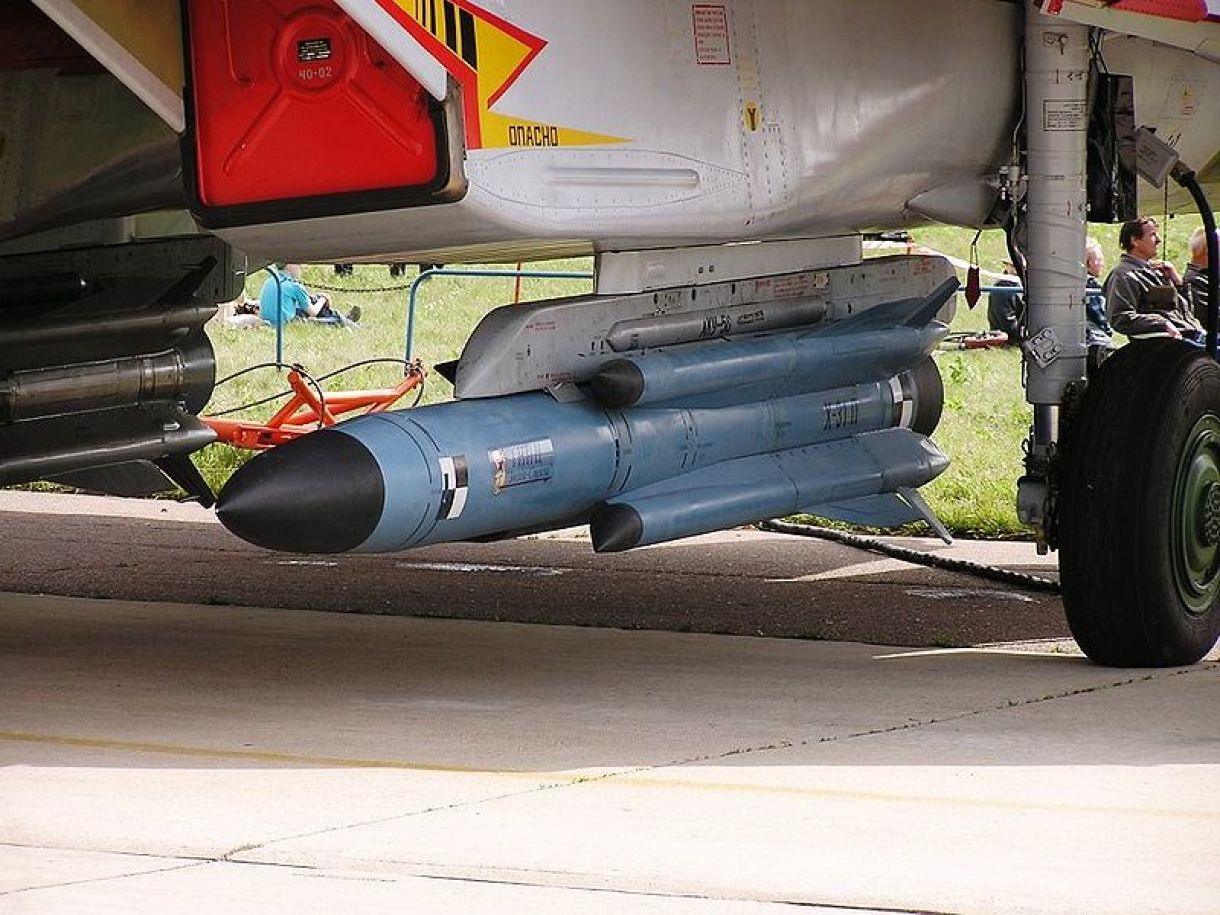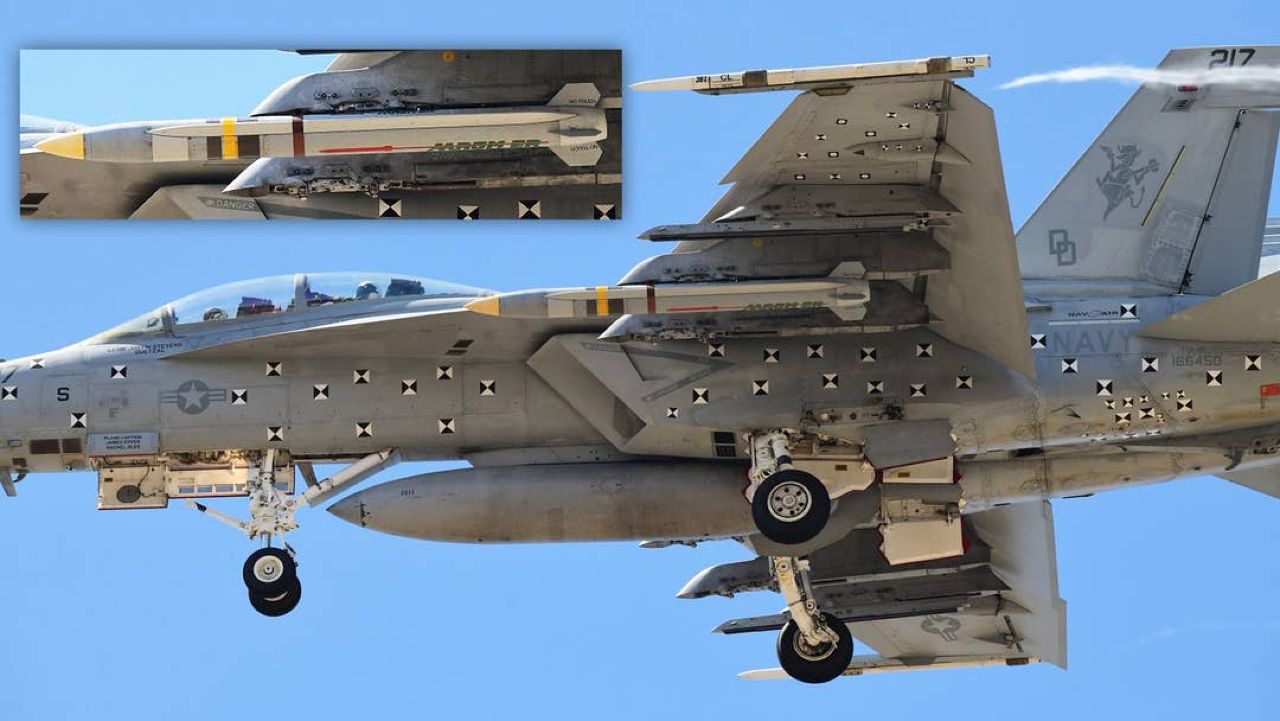India did not have homegrown Anti-Radiation Missiles to neutralize the enemy’s ground-based radars and other communication equipment. The country has successfully tested its RudraM-II anti-radiation missiles that can be fired from both Sukhoi Su-30MKI and Mirage-2000 fighter jets.
Defense Research and Development Organisation’s chief Dr. SV Kamat has confirmed the successful testing of the RudraM-II missile.
In October 2020, India test-fired its first indigenous RudraM anti-radiation missile developed for the Sukhoi Su-30MKI fighter jet. RudraM-II can be fired from both Su-30s and Mirage-2000s, enhancing the Indian Air Force (IAF) firepower considerably. It has a range of 300 kilometers.
While the RudraM-I is equipped with only a passive homing head (PHH) for the final attack on the adversary’s surveillance and guidance radar systems, communication towers, command and control centers, and other radiation-emitting targets, the RudraM-II is equipped with an Imaging Infrared (IIR) seeker along with PHH to neutralize other targets such as airstrips, bunkers, and aircraft hangars.
RudraM-II can carry a 200-kilogram payload. It can achieve a speed of Mach 5.5 and can be launched from altitudes ranging from 3 to 15 kilometers, according to DRDO.
Despite its name, the missile has nothing to do with nuclear power or radiation. They are primarily air defense weapons, generally fired from the air to neutralize ground and ship targets.
They home in on enemy radio emissions of radar stations used for detecting enemy aircraft and direct surface-to-air missiles. The ARMs were invented in the 20th century to disrupt enemy communication and tracking capabilities by taking out their radars.
In 2001, India bought Kh-31s for its Su-30MKI, including 60 Kh-31A and 90 Kh-31P. In July 2019, Sputnik News reported that India procured additional Kh-31 missiles. It is likely a reference to the more lethal D variant. The Indian Navy and the Indian Air Force both operate Soviet-built Kh-31 missiles.
The deployment of these anti-radar missiles in the Russia-Ukraine war, as reported by the EurAsian Times earlier, has been keenly observed and noted by the Indian defense establishment.
Russia claims a 98 percent success rate with the Kh-31PD over several dozen launches against Ukraine. The Russian Ministry of Defense, on several occasions, released videos of Su-35 and Su-30SM fighters equipped with the Kh-31 PD missile.
The Russian pilots call it ‘Supersonic Death’ as the missile is practically invulnerable to enemy anti-aircraft defenses due to its high speed and counter-attack capability.
Relevance Of Anti-Radiation Missile
Both Ukraine and Russian armies have deployed ARMs. Russia used both Kh-31 and Kh-58 anti-radiation missiles to hunt the air defenses of Ukraine in the ongoing war.
Kh-31 is the best-known anti-radiation missile of Russia and can be launched by tactical aircraft. It also has anti-shipping and ground-targeting versions.
In November 2022, RUSI noted that Su-30SM and Su-35S jets frequently fired the Kh-31P and Kh-58 anti-radiation missiles to disable Ukrainian SAM radars. Commanders of the aviation and air defense units of the Ukrainian Air Force reportedly revealed several times that Kyiv had lost several SA-11 and SA-8 SAMs to the Kh-31P and Kh-58 missiles fired by Russian jets.

There have been reports about Russia using a ‘bait and hit’ strategy to destroy NATO-supplied radars in Ukraine. Russia has been luring them with Iskander and Kalibr missiles and then firing anti-radiation missiles after they ‘light up’ and presenting themselves as targets.
The Russians will operate in groups of up to 10 aircraft, some of them (or all ten units) were equipped with anti-radar missiles. The Buk-M1 surface-to-air system can lock on only one target when firing, and at this time, another aircraft would shoot back with its Kh-31 or Kh-58.
To respond to the threat of the anti-radiation missiles, the Ukrainian crews had to use the “bite and run” (Shoot and Scoot) tactic, turning on the anti-aircraft equipment for a few seconds, shooting a missile at the enemy, and immediately shifting positions.
The US government quietly transferred AGM-88 HARM (High-Speed Anti-Radiation Missile) to Ukraine in 2022 under the Presidential Direct Authority. The missile has been launched by the existing aircraft of Ukraine, like Mig-29s and Su-27s.

Air launch is ideal for the AGM-88, providing far better kinetic performance (longer range and speed). It also allows for a far better, elevated sensing position to organically detect the presence and general direction, or even geolocation, of a threat emitter.
In comparison to the American AGM-88 HARM, the Kh-31 is much bigger. The 110-kilogram warhead on its D variant is substantially heavier than the 68-kilogram warhead of the HARM.
Its 1000 m/s speed is much higher than the 600 m/s speed of HARM, giving the D variant much higher momentum when striking a target. As such, the devastation caused by the Kh-31 would substantially exceed that caused by HARM.
The AGM-88E variant of the American missile is otherwise smarter than the Kh-31. It is more difficult to evade than the Kh-31. If an adversary switches off the SAM radar, the AGM-88E is not blinded; it remembers where the adversary radar is and uses its own high-resolution (millimeter wave) radar to “see” the target radar.
Today, electronic support measures and radar homing receivers (RHR) have come a long way, making anti-radiation missiles far more capable and, in some cases, smaller, cheaper, and more accurate.
These can be deployed on the ground across the battlefield, or by an aircraft, and even by drone. Electronic intelligence from a third party, like the United States, could also provide specific intelligence about when and where specific systems are active – providing targets for the Ukrainian forces.
- Ritu Sharma has been a journalist for over a decade, writing on defense, foreign affairs, and nuclear technology.
- She can be reached at ritu.sharma (at) mail.com




